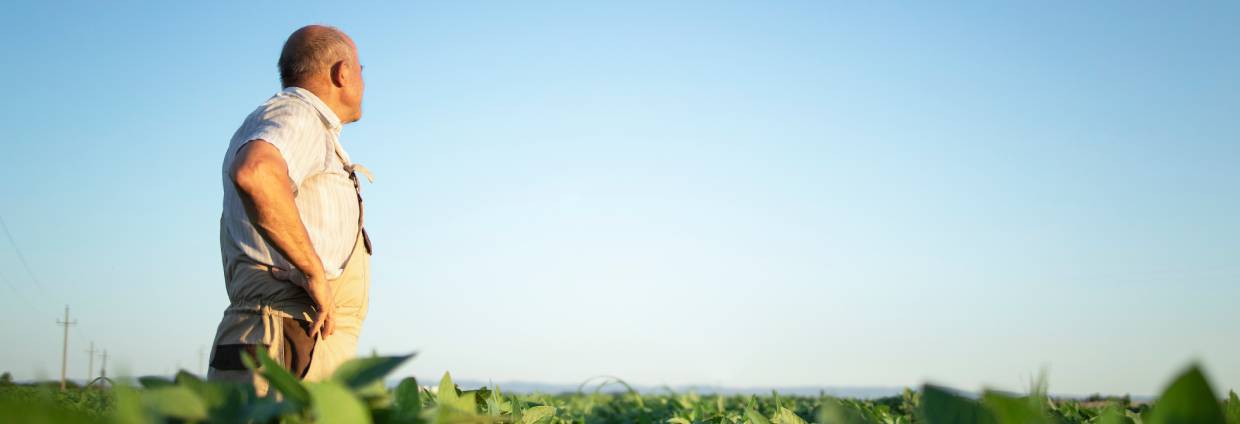As supply chains and climate volatility intensify unpredictability, agricultural organizations face mounting risks – from crop loss and higher costs to supply chain disruption.
Parametric insurance is emerging as an innovative alternative to traditional insurance. Also known as ‘index-based’ insurance, it pays out once a pre-agreed trigger is met, offering corporates and farmers faster, simpler protection in dynamic risk environments.
As the industry moves from physical to intangible assets and navigates an interconnected supply chain, insurance cover must extend beyond just physical threats. Traditional indemnity insurance requires verification of loss before a payout is made. Processing these claims can take months.
By utilizing external data sources and objective criteria, parametric insurance enables faster, more predictable claims. Triggers are based on objective data – such as rainfall levels, wind speed, temperature thresholds, or earthquake magnitude – making payouts quicker and more predictable.
In 2024, the global parametric insurance market was valued at $16.2 billion and is expected to grow at a CAGR of 12.6% between 2025 and 2034.¹ As the risk landscape continues to evolve at speed, parametric insurance offers a means of covering risks.
With 80% of losses uninsured in Latin America – far above North America’s 43% – the region’s acute vulnerability highlights the need for innovative tools like parametric insurance.²
“SP Ventures highlights the rising need for parametric insurance tailored to Latin America’s tropical agriculture. These solutions help farmers of all sizes adapt to climate variability and mitigate risk,” says Vanessa Bello, Principal at SP Ventures.
Addressing agricultural challenges
As one of the sectors most exposed to climate volatility, the agricultural industry is extremely vulnerable to the impacts of climate change – with global yields already reduced by up to 25%.³ Farmers face risks from droughts, floods, heatwaves, and other weather events that can drastically reduce yields. In fact, global natural catastrophe losses reached $280 billion in 2023, with 62% uninsured.²
Parametric insurance offers an innovative solution to protect farmers. By linking payouts to simple physical parameters, farmers receive compensation automatically once thresholds are exceeded.
For farmers, traditional insurance has often failed to meet industry needs, largely due to inaccessibility. High costs, complex field assessments, and exclusion of smallholders due to administrative barriers have limited access.
Parametric insurance addresses these challenges by using independent data (e.g. satellite rainfall measurements or temperature thresholds) to trigger payouts. It enables farmers to receive financial support when they need it, helping them recover quickly and reinvest in their farms.
Parametric insurance – the process
Parametric insurance offers many benefits for farmers, but how does it work? It typically follows four steps:
- Defining the need – broker and client identify risks and design a strategy.
- The coverage – independent data providers and event parameters are selected, resulting in a tailored policy.
- Monitoring parameters – thresholds are continuously tracked.
- Responding to a covered event – if met, funds are paid within weeks.
Emerging tools and technologies
To underwrite parametric insurance, carriers need to know the likelihood, location, and severity of a loss event. Today, technological advances are overcoming previous data gaps.
Product innovation and new technologies such as AI, telematics, and blockchain. Telematics, combined with smart sensors and AI, can improve catastrophe risk modelling. By integrating real-time data, insurers gain a more granular understanding of risks.
Blockchain is being explored for mobile-based applications that enable quicker payouts. Satellite technology monitors weather and climate conditions closely correlated with crop production, such as land greenness and flood expanse. These variables can serve as triggers for agricultural exposure.
“SP Ventures highlights the importance of leveraging technologies like IoT sensors, AI-driven analytics, and satellite imagery to revolutionize parametric insurance. These tools enable more precise and localized risk assessments by providing real-time data on weather patterns, crop health, and environmental conditions, leading to more effective insurance products tailored to farmers, insurers, and buyers,” adds Bello.
“The real potential lies in democratizing risk protection. By using IoT and AI, localized solutions can finally reach small and medium-sized farmers who were previously priced out, unlocking a massive untapped market,” says Bello.
As these technologies advance, parametric insurance will increasingly complement traditional coverage, boosting agribusiness resilience.
Reinventing the ag-food value chain
SP Ventures invests at the intersection of food security and the climate crisis, financing solutions to boost climate resilience and promote sustainable food systems.
The future of food depends on innovation. SP Ventures backs entrepreneurs driving change and investing in tech-powered agricultural and food solutions. By connecting agribusinesses within its network, SP Ventures helps to find the right talent for each organization.
As the agricultural industry continues to face challenging landscapes, parametric insurance stands out as an innovative and effective way to tackle risks. By leveraging technology, it can scale to underserved markets, reduce poverty cycles from extreme weather, and attract private investment into climate adaptation and risk management solutions.
References
- Global Market Insights. Parametric Insurance Market Size.
- Ocampo D.G; and Moreira C.L. FSI Insights No 62. Uncertain waters: can parametric insurance help bridge NatCat protection gaps? December 2024.
- FAO. Scarcity and degradation of land and water: growing threat to food security. November 2011.


